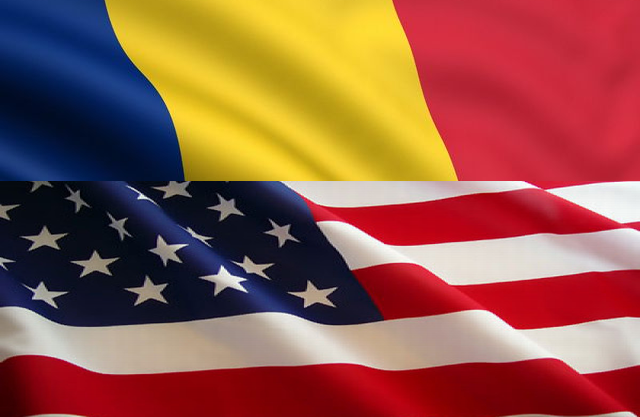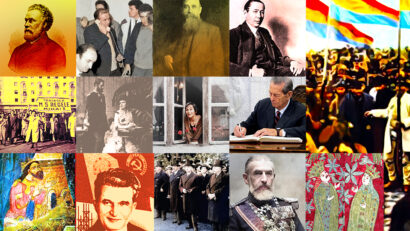Romanian-American relations after 1945
Click here for a look at the Romanian-American relations after 1945

Steliu Lambru, 05.03.2018, 14:10
After 1945, Romania and the United States found themselves on both sides of the Iron Curtain. The end of the Second World War had placed the two countries in opposition, despite the US support for Romania at the end of the First World War, when the principles voiced by President Wilson underlaid the emergence of Greater Romania. Communist ideology helped build a divide between Romania and the USA, although the two countries had little historical disputes.
The setup of the two antagonizing military blocs, NATO and the Warsaw Pact, further deteriorated bilateral relations between the two states. This was all the more evident in the 1950s, when Stalinism was gaining momentum in Central and Eastern Europe. Nevertheless, starting 1953, the year of Stalins death, as Moscow was starting to revise its foreign policy, authorities in both Bucharest and Washington decided to improve relations.
Diplomat Anton Moisescu was appointed Romanias Ambassador to the USA in 1954. In a 1995 interview with Radio Romanias Center for Oral History, Moisescu described the overall context of reconciliation between Romania and the USA: “I would like to mention the fact that during my term as plenipotentiary minister to the US the international context was rather delicate. Relations were tense between the worlds two main centers of power: on the one hand NATO and the United States and, on the other hand, the Warsaw Pact and the Soviet Union. For this reason the diplomatic missions of Soviet states had a very difficult time in the United States. First of all, these diplomats were subject to numerous strict restrictions: they were not allowed to leave the capital without special exemption from the State Department. Romania, for instance, was the only country allowed in New York, given our UN observer state status, as back then our country was not a full member of the General Assembly.
The activities of the US mission to Romania were very limited compared to what they had been before the war. Detente was the main objective that the sides wanted, especially on the American side.
Anton Moisescu told us abut the warmth he felt when he was received by President Eisenhower when he presented his credentials: “Diplomatic personnel was made up of 7 to 8 people in addition to me, and their wives. The military side had three people: one colonel, one major and one captain, with their wives as well. The rest was the administrative personnel of the embassy. We had become a family, all these people together. We took trips on weekends, going fishing on Sundays together. That is when there came the time to submit my letters of accreditation. When I submitted them, I had a very pleasant surprise, in contrast to the general atmosphere, when I was received by US President Dwight Eishenhower, former allied commander during the Normandy landing and the allied push into Europe. He had an exceptionally amicable and kind attitude in our discussions. We expressed our mutual wish to develop relations between the US and Romania in order to get to know each other better. In the end, the president invited me to visit any part of the United States, to get to know America better. That was somewhat in contrast with the general rules imposed on diplomats from our countries.
One other objective of the Romanian embassy was to infiltrate the Romanian community in the US. The Romanian diaspora was overwhelmingly anti-communist, and was critical of the regime in Bucharest, which was supported by Moscow.
However, the emotional strategy, described by Moisescu, managed to turn some of them in favor of Bucharest’s policies: “We tried to form ties with as many American Romanians as we could, because we were isolated from them, too. We had somewhat stronger ties with the newspaper called ‘The Romanian American’. It was published in Detroit, a region with a higher number of Romanians, most of them had emigrated there before the war, working mostly for the Ford factories. The editor-in-chief of the ‘Romanian American’ and his wife invited me to visit Detroit on women’s day, with my wife as a guest of honor. We visited several cities on that occasion, but spent most of the trip in Detroit. There we found about 250 people gathered in a hall, a lot of families, mostly older people, who had left Romania a long time before that, but also lots of younger people. We screened a film about Romania called ‘Romania in Color’, showcasing folklore from Transylvania, Moldavia, and several other parts of the country. The movie had such an impact that, when the lights came up, we saw almost everyone in tears. It was a very emotional moment, and we formed a tight bond. We visited some of them at their homes, others at the factories they worked in. I got in touch with the management in the factories, I was taken to see the entire manufacturing line, and I formed a fair idea of this technology of automobile building, which we used in our own automobile factories when we got back home.
Romanian-American relations returned to normal only after 1989. Until then, they had ups and downs, from limited cooperation to conflicts in the late 1980s. (Translated by V. Palcu and C. Cotoiu)





























